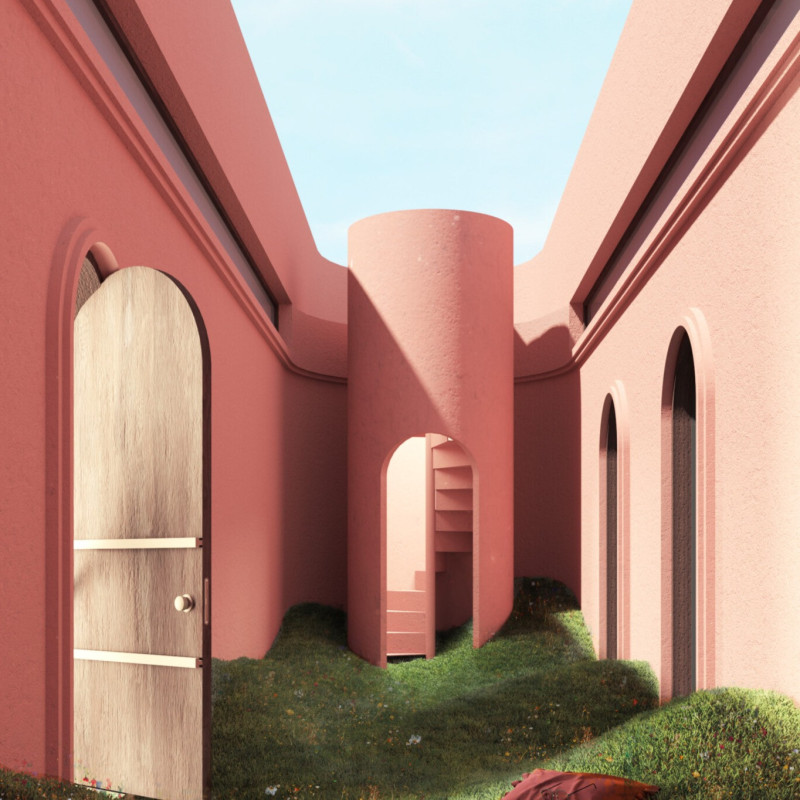5 key facts about this project
The overarching concept of the project revolves around creating a space that facilitates both privacy and connection. By organizing the layout into two distinct halves, each family has their own private areas, while a central zone, known as the Atelier, serves as a shared studio that encourages collaboration and artistic expression. This design approach plays a crucial role in the functionality of the house, allowing for a harmonious balance between individual pursuits and collective gatherings.
The architectural design employs a range of materials that enhance both the structural integrity and the visual appeal of the building. Predominantly, wood is utilized for its warmth and natural character, echoing the nearby forest. Concrete forms the robust foundation, ensuring durability against the elements, while thatched roofing reflects traditional craftsmanship and provides insulation, linking the house with its rural context. Expansive glass panels are strategically integrated into the design, inviting natural light into the interiors and offering panoramic views of the surrounding environment. The inclusion of stone elements adds texture and complements the natural palette, reinforcing the connection between the built and natural landscapes.
Critical components of the design are characterized by their unique approach to space and light. The Atelier features movable walls, allowing for adaptability in its use. This flexibility serves not only as a workspace for artistic endeavors but also as a venue for exhibitions, family gatherings, or educational activities. The careful arrangement of spaces encourages ease of movement and interaction, making the house more than just a dwelling; it becomes a vibrant hub for creativity and collaboration.
The lighting design also merits attention, providing an essential layer to the architecture. By incorporating skylights and strategically positioned windows, the project maximizes daylight, creating an atmosphere that evolves throughout the day. This thoughtful approach to natural illumination enhances the experience of the interiors, aligning with the overall intent to foster inspiration and tranquility amidst the beauty of the natural surroundings.
What sets The In-Between Lake House apart is its meticulous attention to the interplay between functionality, artistic expression, and environmental consciousness. The design respects and responds to the site, allowing for a seamless transition between indoor and outdoor living. By promoting sustainable building practices through the use of local materials and nature-inspired aesthetics, the project underscores a commitment to ecological stewardship.
Developers and enthusiasts of modern architecture will find the details of this project particularly compelling. Exploring the architectural plans, sections, and designs can provide further insights into the innovative ideas behind the In-Between Lake House. Each element of the design contributes to a cohesive narrative that illustrates how architecture can bring families together while respecting their individuality and fostering creativity within a beautiful natural framework.
For a deeper understanding of this architectural endeavor, it is encouraged to review additional details of the project presentation, capturing the essence of the design and its potential to inspire similar endeavors.


























